Posté par Olivier Bonfait, le 12 novembre 2025;
- Date limite : 31 mars 2026
 Eros au Musée. Acquérir, montrer et voir les œuvres érotiques Résumé Eros au Musée. Acquérir, montrer et voir les œuvres érotiques Résumé
Le musée n’est pas seulement un lieu d’exposition : il est aussi un espace où se négocient sans cesse la visibilité et la valeur des œuvres. En suivant la thèse formulée par Walter M. Kendrick – selon laquelle l’isolement d’images jugées inmontrables a contribué, paradoxalement, à constituer la catégorie autonome de la pornographie –, ce colloque propose d’explorer le rôle du musée dans la construction et la reconfiguration des regards genrés portés sur les objets liés à la sexualité et/ou au désir (érotiques et pornographiques).
Argumentaire
Le musée n’est pas seulement un lieu . . . → En lire plus
Posté par Centre Dominique-Vivant Denon, le 31 octobre 2025;
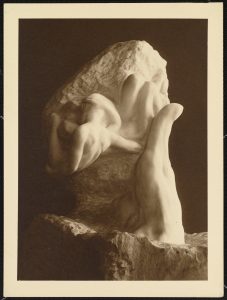
Jacques-Ernest Bulloz, La Main de Dieu d’Auguste Rodin, après 1918, épreuve gélatino-argentique virée,Paris, musée Rodin, Ph.04857 © musée Rodin – photo Jean de Calan
À l’occasion de l’exposition sur Michel-Ange et Rodin, qui se tiendra au musée du Louvre du 15 avril au 20 juillet 2026, le musée du Louvre et le musée Rodin s’associent pour organiser le colloque « Mythe du sculpteur – Sculpteurs mythiques », sous la direction des deux commissaires Chloé Ariot et Marc Bormand. Cet appel à communication est ouvert à l’ensemble de la communauté scientifique, patrimoniale comme universitaire, . . . → En lire plus
Posté par Estelle Leutrat, le 31 octobre 2025;
- date limite des propositions : 14 février 2026
Charles De Wailly à l’œuvre : Journée d’études reportée au 02 avril 2026 Appel à communication 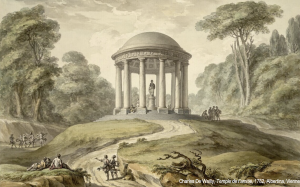
En 1979, l’exposition Charles De Wailly, peintre architecte dans l’Europe des Lumières mettait sur le devant de la scène une des figures majeures de l’architecture du XVIIIe siècle, distinguée notamment par la construction de la Comédie-Française avec Marie-Joseph Peyre. Depuis ce travail fondateur mené par Michel Gallet, Monique Mosser et Daniel Rabreau, d’autres chercheurs ont apporté leur pierre à l’édifice au travers de nouvelles études consacrées à ses théâtres (M. Sajous d’Orjas, Y. Brault, N. Bouchon, H. Volle), à ses projets d’urbanisme (J. . . . → En lire plus
Posté par Viviane Delpech, le 31 octobre 2025;
- date limite des propositions : 5 janvier 2026
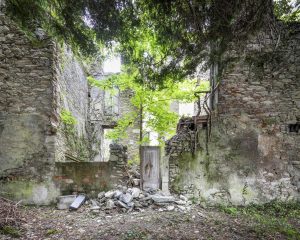
GIP EPAU- POPSU Territoires, qui est un programme de recherche-action sur les petites villes et les ruralités, qui rassemble aujourd’hui 51 territoires. Un de ces projets se situe aux Eaux-Bonnes et est placé sous la responsabilité scientifique de Viviane Delpech, professeure à l’université de Pau. Il porte sur le patrimoine architectural et thermal de la ville
Appel à communications : Colloque international « Patrimoine en péril dans les zones rurales et montagneuses » (Pau/Eaux-Bonnes, 2-3 avril 2026)
Date limite: 5 janvier 2026
Versions anglaise et espagnole de l’appel via ce lien
Le . . . → En lire plus
Posté par Olivier Bonfait, le 29 octobre 2025;
- Date limite : 30 novembre 2025
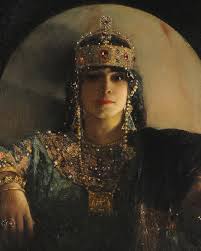 Appel à communication Appel à communication
Mirages de Byzance dans l’art en France (1821–1931) Lyon, Auditorium du musée des Beaux-Arts, 11–12 juin 2026
Comité scientifique et d’organisation François de Vergnette (LARHRA), Maximilien Durand (Département des Arts de Byzance et des Chrétientés en Orient, Musée du Louvre), Ioanna Rapti (EPHE), Rémi Labrusse (EHESS), Édouard Papet (Musée d’Orsay), Adrien Palladino (Département des Arts de Byzance et des Chrétientés en Orient, Musée du Louvre)
De 1821, année du déclenchement de la guerre d’indépendance grecque, à laquelle la France prit une part active et qui contribua à la redécouverte d’un patrimoine grec médiéval encore méconnu, à 1931, date de la première exposition internationale d’art byzantin à Paris, l’intérêt pour . . . → En lire plus
Posté par Olivier Bonfait, le 29 octobre 2025;
- Date limite : 14 décembre
Memory and Medieval Material Culture.
The Courtauld Medieval Postgraduate Colloquium. In our digital age, memory is both permanent and fleeting: forever enshrined on the internet, and yet easily forgotten amid the endless scroll of new information. In the Middle Ages, however, memory was more consciously articulated by medieval makers, patrons and viewers, and was appropriated to serve carefully crafted political, devotional and cultural agendas. Far from being passive repositories of remembrance, medieval artworks, buildings and objects played active roles in constructing, shaping and transmitting memory, whether personal, collective or institutional. This colloquium invites papers that explore the complex and dynamic relationship between memory and the material culture of the Middle Ages. It seeks to consider how images from medieval Europe, Byzantium and the Islamic world engaged with the . . . → En lire plus
Posté par Olivier Bonfait, le 29 octobre 2025;
- Date limite : 31 décembre 2025
Circulations: Works, Artists, and Ideas in the Art Market.
Researching Art Markets Past and Present: Tools for the Future (RAM-T) 11th Workshop.
Cadi Ayyad University will host the international workshop “Circulations: Works, Artists, and Ideas in the Art Market” on 22-23 May 2026, the eleventh in the International Workshops Series Researching Art Markets past & present: Tools for the future (RAM-T). The Series is part of RAM-T, the international interdisciplinary initiative and community which was jointly founded by Elisabetta Lazzaro (University for the Creative Arts, UK), Nathalie Moureau (University Paul Valéry, Montpellier), and Adriana Turpin (IESA Art & Culture, Paris, and the Society for the History of Collecting, London) in 2017. Through individual presentations followed by group discussions, the RAM-T workshop series aims to bring together international scholars . . . → En lire plus
Posté par jcerman, le 20 octobre 2025;
- date limite des propositions : 15 décembre 2025
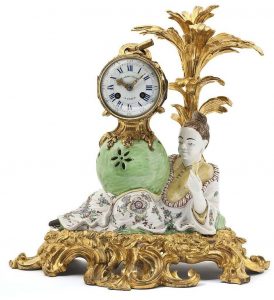
Pendule — Ladouceur (horloger), Manufacture de Chantilly, vers 1740-1750, Porcelaine tendre, porcelaine tendre moulée, décor polychrome sur couverte, bronze ciselé et doré, inv. 22757, musée des Arts décoratifs, Paris.
Appel à communications : Les Rencontres des Arts décoratifs. Le XVIIIe siècle : objets, sensibilités, perceptions, réceptions (Paris, 16 avril 2026)
Les relations entre les arts, les métiers et l’industrie suscitent aujourd’hui un très grand intérêt. Cours, séminaires et conférences se multiplient, nous incitant à approfondir les connaissances et à débattre autour de questions méthodologiques, théoriques, patrimoniales et techniques.
Les Rencontres des Arts Décoratifs entendent contribuer à la structuration de ce . . . → En lire plus
Posté par Olivier Bonfait, le 14 octobre 2025;
- Date limite : 7 nov. 2025
Photographic Interiors: between Staging and Documentation
From family pictures to police photographs and social surveys, the photographic documentation of private interiors often finds pictures in front of the lens. It turns the images in the interior, along with their often fleeting arrangements, into fixed coordinates. It also reminds us how our lives are surrounded by images. Photography, along with other printed image technologies, is a major component of the ordinary visual environment that papers domestic surfaces, at the same time at it proves to be a particularly adequate means of documenting interiors.
This conference aims to think through this mirror effect of photographed photographs, by considering together images of domestic worlds and everyday image practices anchored in the dwelling. The aim is twofold: to examine the various ways . . . → En lire plus
Posté par Olivier Bonfait, le 14 octobre 2025;
- Date limite : 8 novembre 2025
 Festival de l’histoire de l’art: Mode (Fontainebleau, 5-7 Jun 26) Festival de l’histoire de l’art: Mode (Fontainebleau, 5-7 Jun 26)
I
La 15ème édition du festival de l’histoire de l’art qui se déroulera du 5 au 7 juin prochain aura pour pays invité, le Maroc, et pour thématique, la mode. Organisée tous les ans par l’Institut National d’Histoire de l’Art et le Château de Fontainebleau, en collaboration avec le ministère de la Culture, cette manifestation nationale, d’accès libre et gratuite, propose 250 évènements, sous la forme de conférences, dialogues et tables rondes, d’un Salon du livre, et d’une programmation cinéma et culturelle. Pour la communauté des historiens/historiennes de l’art et les professionnels/professionnelles des musées, il constitue une opportunité . . . → En lire plus
Posté par Nicolas Ballet, le 8 octobre 2025;

François Boucher, La Toilette, 1742, huile sur toile, Madrid, Musée Thyssen-Bornemisza.
La 15ème édition du festival de l’histoire de l’art qui se déroulera du 5 au 7 juin prochain aura pour pays invité, le Maroc, et pour thématique, la mode.
Organisée tous les ans par l’Institut National d’Histoire de l’Art et le Château de Fontainebleau, en collaboration avec le ministère de la Culture, cette manifestation nationale, d’accès libre et gratuite, propose 250 évènements, sous la forme de conférences, dialogues et tables rondes, d’un Salon du livre, et d’une programmation cinéma et culturelle.
Pour la communauté . . . → En lire plus
Posté par jcerman, le 1 octobre 2025;
- date limite des propositions : 24 novembre 2025
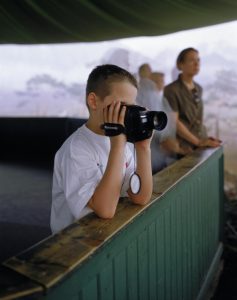
Arno Gisinger, Sans titre, 1998.
Appel à communications : Colloque « Élargir les horizons. Vision panoramique et photographie » (Paris, 15-17 avril 2026)
Centre André Chastel – EPHA – Lieven Gevaert Research Centre of Photography, Art and Visual Culture
INHA/BNF, Paris, 15-17 avril 2026
Peu de temps après l’annonce officielle de l’invention de la photographie en 1839, une grande variété d’appareils photographiques panoramiques, de formats et de techniques furent développés afin d’offrir des vues étendues de paysages, de panoramas urbains et de monuments. Si la plupart des récits attribuent . . . → En lire plus
Posté par Olivier Bonfait, le 29 septembre 2025;
- Date limite : 20 décembre 2025
Appel à communication : journée d’étude « Textiles de résistances. Approches contemporaines du textile comme art du sensible et geste critique »
Date et lieu : Université Bourgogne Europe, Dijon Salle du Forum des savoirs, MSH 24 avril 2026 Organisée par Valérie Dupont (Université de Bourgogne Europe) et Servin Bergeret (École des Arts du Rhin – site de Mulhouse)
« Textiles de résistances. Approches contemporaines du textile comme art du sensible et geste critique »
Le textile connaît depuis plusieurs décennies une réévaluation esthétique et critique. Les expositions françaises récentes (Olga de Amaral à la Fondation Cartier, Chiharu Shiota au Grand Palais) et leur succès public attestent la tendance. Des jeunes artistes renouvellent aujourd’hui l’art (du) textile (Chalisée Naamani et ses vêtements-images exposés en 2025 au Palais de Tokyo ; . . . → En lire plus
Posté par Olivier Bonfait, le 29 septembre 2025;
- Date limite : 21 nov. 2025
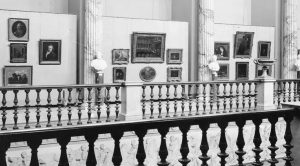 Appel à communications : « Situer le Nord : Circulations franco-nordiques (1870-1940) » (Paris, INHA, 10 avril 2026) Appel à communications : « Situer le Nord : Circulations franco-nordiques (1870-1940) » (Paris, INHA, 10 avril 2026)
Paris, Institut national d’histoire de l’art (INHA), Apr 10, 2026 Deadline: Nov 21, 2025
Argumentaire
Le « Nord », tantôt envisagé comme concept esthétique et historiographique dans l’histoire de l’art, tantôt comme réalité géographique, culturelle ou météorologique vécue par les artistes de la région, a longtemps fasciné les historien·ne·s de l’art. Désigné parfois sous le terme de « boréalisme » (Briens, 2016), il s’agit d’une construction mouvante dont la polysémie maintient les idées vagues d’un espace lointain au climat . . . → En lire plus
Posté par Olivier Bonfait, le 29 septembre 2025;
- Date limite : 4 oct. 2025
Shifting the Frame – Women’s Photographic Practices (1840–1960).
Biblioteca Municipal Almeida Garrett, Porto, Portugal, Mar 5–07, 2026 Deadline: Oct 4, 2025
Women photographers have been systematically written out of the history of photography. Despite their active, diverse, and sustained engagement with the medium since its inception, scholarly recognition of their contributions remains limited. From the 1840s onward, women across different geographies — whether as professionals, amateurs, technicians, or artists — opened studios, undertook specialised work in photographic laboratories, and used photography as a powerful means of self-representation and social visibility. Yet, their stories have often been forgotten, underrepresented, or subsumed within dominant narratives that privilege male authorship and institutional frameworks.
This international conference aims to bring long-overdue visibility to women photographers active between 1840 and 1960 by uncovering . . . → En lire plus
Posté par Vladimir Nestorov, le 20 septembre 2025;
- date limite des propositions : 5 octobre 2025
 Appel à communication : « L’Etat et les arts (1791-1848) » (Paris, 5 décembre 2025) Appel à communication : « L’Etat et les arts (1791-1848) » (Paris, 5 décembre 2025)

Paris, 65 rue de Richelieu, 5 décembre 2025. Atelier.
Programme
Porté par l’École des chartes et le Centre national des arts plastiques (Cnap), le programme de recherche Histoire de la collection sans mur de l’État (1791-1848) consiste à reconstituer rétrospectivement l’inventaire des achats et des commandes effectuées par l’administration des beaux-arts entre 1791 et 1848. Le Cnap est le successeur direct de l’administration des Beaux-Arts créée pendant la révolution de 1789, et l’héritier du patrimoine constitué durant les . . . → En lire plus
Posté par Olivier Bonfait, le 17 septembre 2025;
- Date limite : 30 septembre 2025
PRIN – PROGETTI DI RICERCA DI RILEVANTE INTERESSE NAZIONALE – Bando 2022 “Le forme del museo: progetto pilota per un atlante digitale dei musei italiani” Università di Napoli Federico II, Università di Pisa, Università Roma Tre, Università di Udine
International Conference Towards a Visual History of Museums: Studies and Experiences
edited by Silvia CECCHINI, Paola D’ALCONZO, Antonella GIOLI, Donata LEVI
Proposal Submission Deadline: September 30, 2025 Notification of Selection Results: October 15, 2025
In recent years, many museums have engaged in redefining their image through re-installations or new tools for self-representation. More rarely, however, have museum institutions focused on communicating their own history to the public, an approach that would allow visitors to understand exhibition spaces as the result of multiple processes including the formation of collections, their arrangements, the . . . → En lire plus
Posté par Vladimir Nestorov, le 16 septembre 2025;
- date limite des propositions : 21 novembre 2025
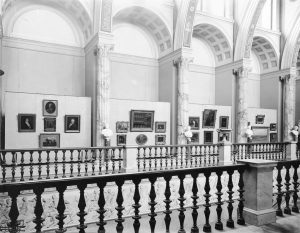 Appel à communication : journée d’étude internationale « Situer le Nord : circulations franco-nordiques (1870–1940) » (Paris, 10 avril 2026) Appel à communication : journée d’étude internationale « Situer le Nord : circulations franco-nordiques (1870–1940) » (Paris, 10 avril 2026)
Le « Nord », tantôt envisagé comme concept esthétique et historiographique dans l’histoire de l’art, tantôt comme réalité géographique, culturelle ou météorologique vécue par les artistes de la région, a longtemps fasciné les historien·ne·s de l’art. Désigné parfois sous le terme de « boréalisme » (Briens, 2016), il s’agit d’une construction mouvante dont la polysémie maintient les idées vagues d’un espace lointain au climat aride, transposé sur les œuvres de ses peintres. Cependant, au-delà de ces lieux communs apparaissent les contours d’une autre réalité : . . . → En lire plus
Posté par Hervé Mouillebouche, le 16 septembre 2025;
- date limite des propositions : 1er mai 2026
Appel à communication : « Se chauffer au château (Xe-XVIIIe siècles). Techniques, pratiques et usages pour le confort thermique dans la demeure élitaire » (Pierre-de-Bresse, 16-18 octobre 2026)
château de Pierre-de-Bresse (Saône-et-Loire)
 On a tout dit et on sait tout sur le chauffage dans le château d’Ancien Régime : des cheminées, des poêles parfois, chacun en a vu et pense savoir comment ils fonctionnaient. Pourtant, quelle distance entre notre société habituée à vivre avec des températures de 19 à 21° dans les pièces intérieures, et celle où l’on entrait dans la chambre du château à une température équivalente à celle du dehors ! Le chauffage . . . → En lire plus On a tout dit et on sait tout sur le chauffage dans le château d’Ancien Régime : des cheminées, des poêles parfois, chacun en a vu et pense savoir comment ils fonctionnaient. Pourtant, quelle distance entre notre société habituée à vivre avec des températures de 19 à 21° dans les pièces intérieures, et celle où l’on entrait dans la chambre du château à une température équivalente à celle du dehors ! Le chauffage . . . → En lire plus
Posté par patrizia.celli, le 16 septembre 2025;
- date limite des propositions : 15 octobre 2025
Appel à communication : Colloque international « Les dons diplomatiques à l’époque moderne et contemporaine : définitions, mutations et patrimonialisation à l’échelle globale » (Rome, 2-3 mars 2026)

Rome, Académie de France à Rome, Villa Médicis
Témoins éloquents des commerces apaisés, les dons diplomatiques ont fait l’objet d’importants travaux ces dernières décennies. A la suite de la réflexion séminale de Marcel Mauss sur l’anthropologie du don, les historiens de la diplomatie des temps modernes (Bély ; Frigo) se sont attachés aux contextes matériels et politiques dans lesquels se sont déployés les échanges interculturels et intercultuels. Tandis que l’histoire connectée a pris pour jalons des objets signifiants (Subrahmanyam . . . → En lire plus
|
Équipe Rédacteur en chef : Olivier Bonfait.
Rédacteurs : Elliot Adam (Moyen Age) ; Nicolas Ballet (XX-XXIe siècles) ; Matthieu Fantoni (musées) ; Antonella Fenech Kroke (bourses) ; Vladimir Nestorov (Lettre mensuelle)
Administrateur web : Matthieu Lett.
ancien éditeur : Pascale Dubus
anciens rédacteurs : Gautier Anceau, Sébastien Bontemps, Damien Bril ; Sébastien Chauffour ; Ludovic Jouvet ; Aude Prigot
|
 Eros au Musée. Acquérir, montrer et voir les œuvres érotiques Résumé
Eros au Musée. Acquérir, montrer et voir les œuvres érotiques Résumé 













